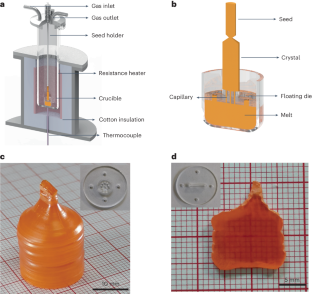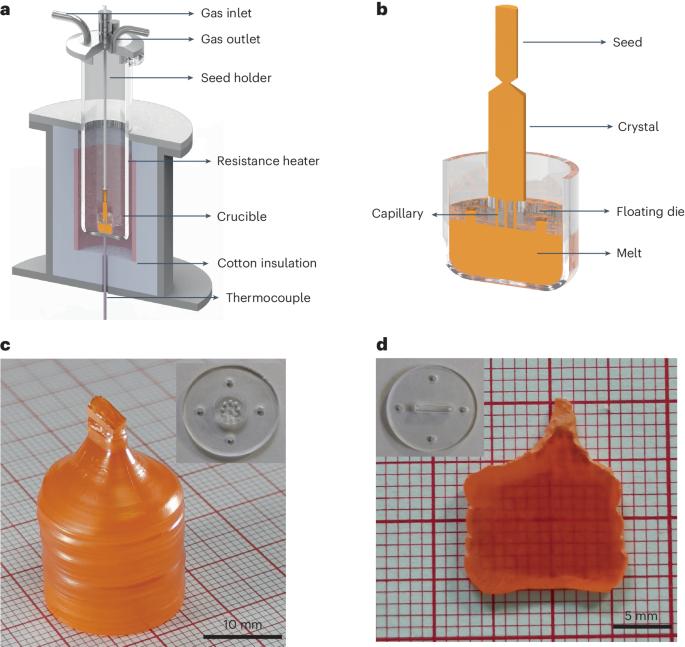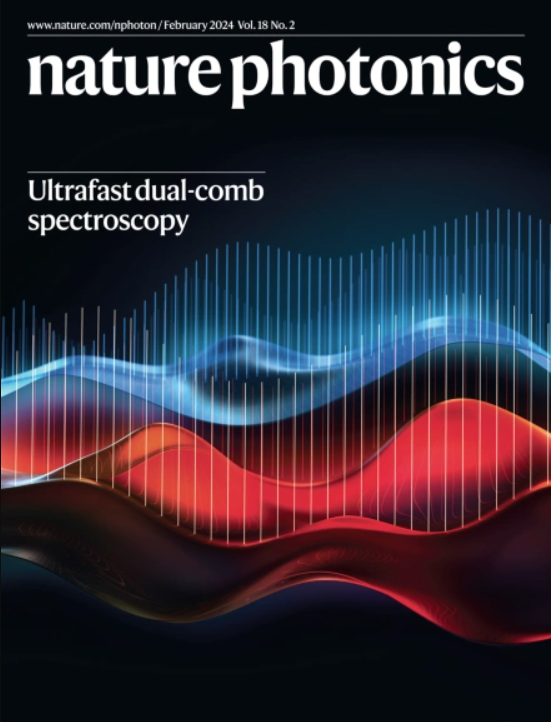Suppressed ion migration for high-performance X-ray detectors based on atmosphere-controlled EFG-grown perovskite CsPbBr3 single crystals
IF 32.3
1区 物理与天体物理
Q1 OPTICS
引用次数: 0
Abstract
Halide perovskites have shown great potential for X-ray detection in medical imaging and product inspection applications. However, the ion migration in perovskites causes large noise and baseline drift, deteriorating the X-ray detection and imaging performance. Here we adopt the atmosphere-controlled edge-defined film-fed growth (EFG) method to grow high-quality shape-controlled CsPbBr3 single crystals (SCs) in an Ar and HBr mixed atmosphere. Compared with the vertical Bridgman (VB)-CsPbBr3 SCs, the EFG-CsPbBr3 SCs show a much lower trap density, a higher resistivity (1.61 × 1010 Ω cm) and a larger ion migration activation energy (0.378 eV), decreasing the leakage current and baseline drift. An X-ray detector based on EFG-CsPbBr3 SCs hence exhibits outstanding balanced performance, with a negligible dark-current drift of 1.68 × 10−9 μA cm−1 s−1 V−1, an incredibly low detection limit of 10.81 nGyair s−1 and a sensitivity of 46,180 μC Gyair−1 cm−2 under a high electric field of 5,000 V cm−1. Furthermore, the detector maintains a stable response for 30 days. Our work provides an effective strategy to improve lead-halide perovskite SCs for high-performance X-ray detection and imaging. The researchers improve the properties of halide perovskite for high-performance X-ray detection by edge-defined film-fed crystal growth. In particular, high resistivity, low trap density, suppressed ion migration and reduced leakage current are demonstrated. They enable detectors with an extremely low detection limit and high sensitivity.


基于大气控制 EFG 生长的包晶 CsPbBr3 单晶的高性能 X 射线探测器的离子迁移抑制技术
卤化物包光体在医疗成像和产品检测应用中的 X 射线探测方面显示出巨大的潜力。然而,包晶中的离子迁移会导致较大的噪声和基线漂移,从而降低 X 射线检测和成像性能。在此,我们采用气氛控制的边缘薄膜生长(EFG)方法,在 Ar 和 HBr 混合气氛中生长出高质量形状可控的 CsPbBr3 单晶(SC)。与垂直布里奇曼(VB)-CsPbBr3 单晶相比,EFG-CsPbBr3 单晶具有更低的阱密度、更高的电阻率(1.61 × 1010 Ω cm)和更大的离子迁移活化能(0.378 eV),从而降低了泄漏电流和基线漂移。因此,基于 EFG-CsPbBr3 SCs 的 X 射线探测器具有出色的平衡性能,其暗电流漂移为 1.68 × 10-9 μA cm-1 s-1 V-1,可忽略不计;在 5,000 V cm-1 的高电场下,其探测极限低至 10.81 nGyair s-1,灵敏度高达 46,180 μC Gyair-1 cm-2。此外,该探测器还能在 30 天内保持稳定的响应。我们的工作为改进铅卤化物包晶SC以实现高性能X射线探测和成像提供了一种有效的策略。
本文章由计算机程序翻译,如有差异,请以英文原文为准。
求助全文
约1分钟内获得全文
求助全文
来源期刊

Nature Photonics
物理-光学
CiteScore
54.20
自引率
1.70%
发文量
158
审稿时长
12 months
期刊介绍:
Nature Photonics is a monthly journal dedicated to the scientific study and application of light, known as Photonics. It publishes top-quality, peer-reviewed research across all areas of light generation, manipulation, and detection.
The journal encompasses research into the fundamental properties of light and its interactions with matter, as well as the latest developments in optoelectronic devices and emerging photonics applications. Topics covered include lasers, LEDs, imaging, detectors, optoelectronic devices, quantum optics, biophotonics, optical data storage, spectroscopy, fiber optics, solar energy, displays, terahertz technology, nonlinear optics, plasmonics, nanophotonics, and X-rays.
In addition to research papers and review articles summarizing scientific findings in optoelectronics, Nature Photonics also features News and Views pieces and research highlights. It uniquely includes articles on the business aspects of the industry, such as technology commercialization and market analysis, offering a comprehensive perspective on the field.
 求助内容:
求助内容: 应助结果提醒方式:
应助结果提醒方式:


